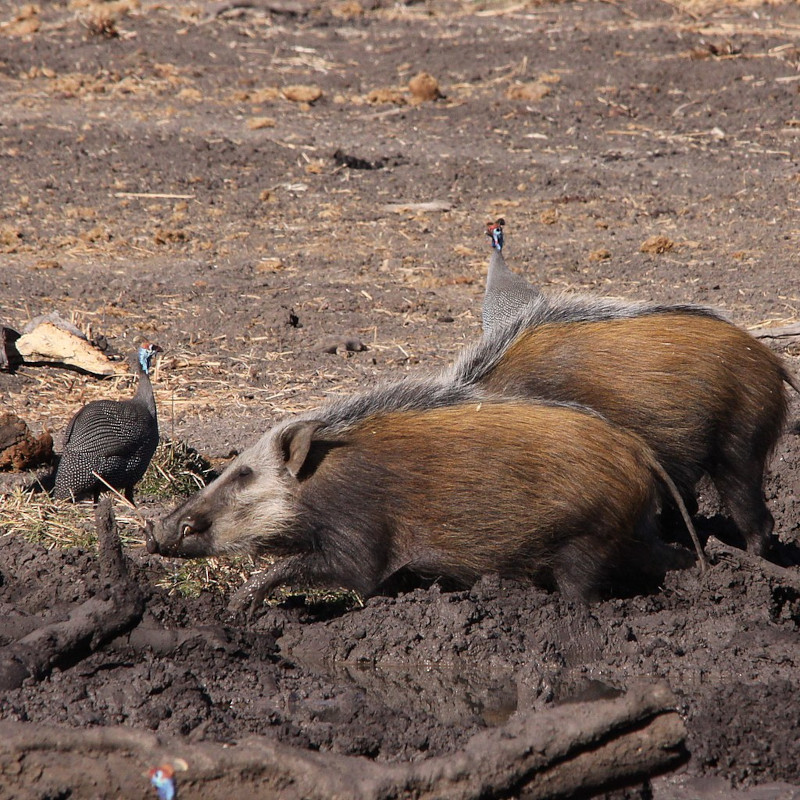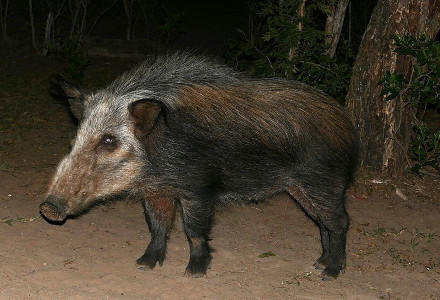
Photographer: Derek Keats
CC License: https://bit.ly/37oSgks
African Bush Pig Facts
- The African Bush Pig represents a rather large and powerful member of the wild pig family. Further, it also makes one very intimidating looking animal.
- This pig also constitutes one of the few animals whose numbers have actually increased over the past few decades.
- Unfortunately, this primarily occurred as a result of the decline in the population of its principal natural predator, the leopard.
- Though humans hunt the pig rather extensively in many areas, it often proves quite cunning and has shown itself to be highly adaptable to hunting methods.
Related Articles
Tree Kangaroo North Sulawesi Babirusa Okapi
African Bush Pig Physical Description
The African Bush Pig also attains a height of as much as 39 in (100 in) at the shoulder. Large individuals may weigh up to 331 lb (150 kg).
In addition, a small degree of sexual dimorphism is present in this species, with the males typically slightly larger in size than the females.
The coloring of the mammal presents predominantly reddish or brownish-black. Its body also develops covered in long, bristle-like hairs which gives it a unique appearance. The hairs are most commonly off-white around the neck and face area.
Moreover, the snout of the African Bush Pig is generally blunt and muscular. In addition, the tusks are usually short but are deceptively powerful (woe to any who discover this fact the hard way).
- Kingdom: Animalia
- Phylum: Chordata
- Class: Mammalia
- Order: Artiodactyla
- Family: Suidae
- Genus: Potamohoerus
- Species: P. larvatus
African Bush Pig Distribution, Habitat, and Ecology
The African Bush Pig evolved as endemic to Southern and Eastern Africa. But, it has been introduced into other regions, as well, thanks to the activities of man.
Within its native range, individuals most commonly inhabit woodlands, forests, regions of dense brush, and reed bed.
The powerful animal is also a rather highly social creature, traveling in groups (known as sounders) of as many as 12 individuals.
The animal’s also omnivorous by nature, with a diet ranging from insects to small animals and invertebrates, various plants, and carrion.
The African Bush Pig is also primarily nocturnal in its activities. It can also be extremely aggressive by nature, especially when females have young. Beware – those tusks are there for a reason.
Species Sharing Its Range
Bat Eared Fox Devil’s Flower Mantis Medusa’s Head
Check out our other articles on Raccoon Dog, Binturong, Northern Hairy-Nosed Wombat, Earth’s Many Stunning Waterfalls

